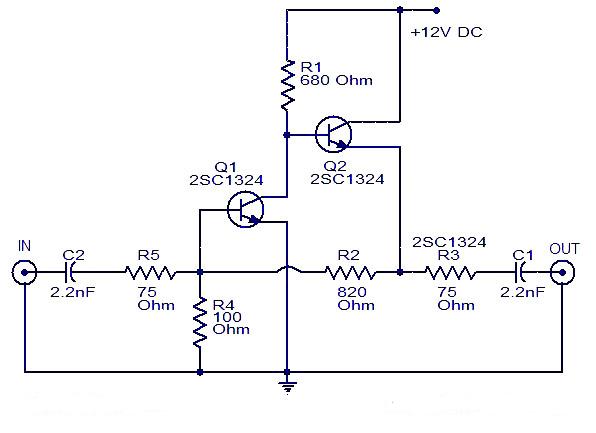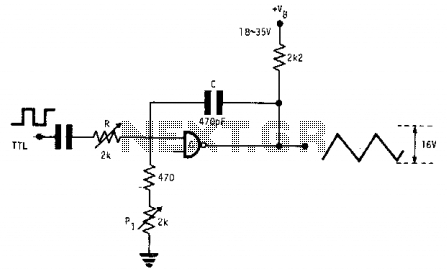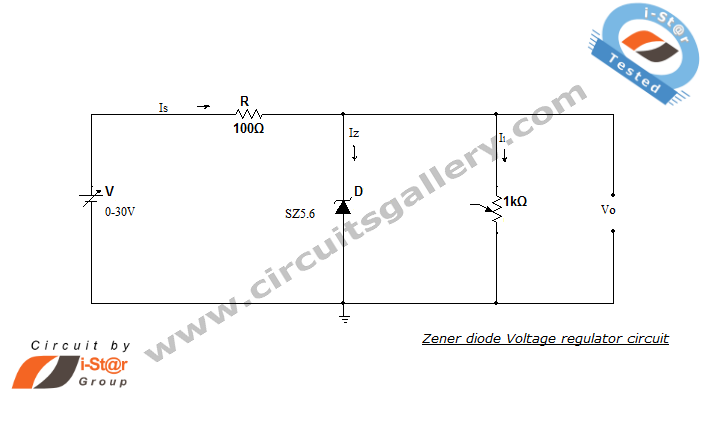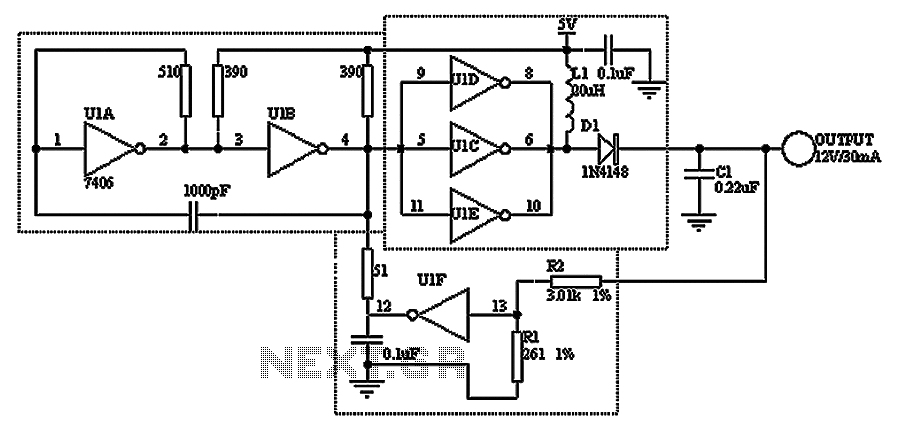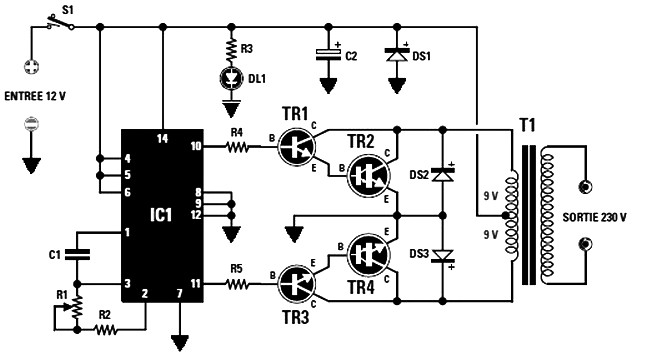
Frequency to voltage converter using LM331
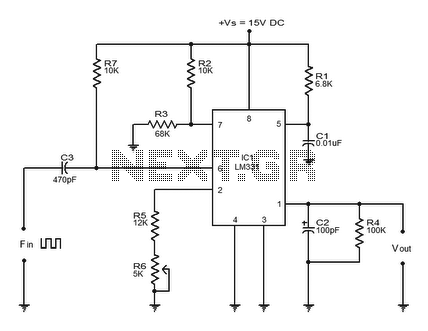
The LM331 is a precision voltage-to-frequency converter developed by National Semiconductors. This integrated circuit (IC) has various applications, including analog-to-digital conversion, long-term integration, voltage-to-frequency conversion, and frequency-to-voltage conversion. Its wide dynamic range and excellent linearity make it suitable for the aforementioned applications. In this configuration, the LM331 is set up as a frequency-to-voltage converter, which transforms the input frequency into a proportional voltage that maintains a high degree of linearity with respect to the input frequency. The conversion process involves differentiating the input frequency using a capacitor (C3) and a resistor (R7), with the resulting pulse train fed into pin 6 (threshold) of the IC. The negative-going edge of this pulse train at pin 6 activates the built-in comparator circuit, which, in turn, triggers the timer circuit. At any given moment, the current flowing from the current output pin (pin 6) is proportional to both the input frequency and the values of the timing components (R1 and C1). Consequently, a voltage (Vout) that is proportional to the input frequency (Fin) is produced across the load resistor (R4).
The LM331 integrated circuit operates based on the principle of converting frequency signals into corresponding voltage levels, making it a versatile component in various electronic systems. The architecture of the circuit typically includes several key components: a capacitor (C3) that differentiates the input frequency signal, a resistor (R7) that helps shape the pulse train, and the timing components (R1 and C1) that define the response characteristics of the circuit.
When the input frequency signal is applied, the capacitor (C3) serves to differentiate the signal, producing a pulse train that represents the changes in the frequency over time. This pulse train is then directed to pin 6 of the LM331, where the threshold comparator monitors the signal. The negative edges of the pulse train trigger the internal comparator, which activates the timer circuit within the IC.
The output current from pin 6 of the LM331 is directly influenced by the input frequency and the timing components. As the input frequency increases, the current output also increases proportionally, thereby generating a corresponding output voltage (Vout) across the load resistor (R4). This output voltage can be utilized in various applications, such as analog-to-digital conversion systems, where it can be further processed or displayed.
In summary, the LM331 serves as a precise and efficient means of converting frequency signals into linear voltage outputs, making it an essential component in modern electronic design and applications. Its ability to maintain excellent linearity and wide dynamic range enhances its usability in various measurement and control systems.LM331 is basically a precision voltage to frequency converter from National Semiconductors. The IC has a hand full of applications like analog to digital conversion, long term integration, voltage to frequency conversion, frequency to voltage conversion. Wide dynamic range and excellent linearity makes the IC well suitable for the applications men tioned above. Here the LM331 is wired as a frequency to voltage converter which converts the input frequency into a proportional voltage which is extremely linear to the input frequency. The frequency to voltage conversion is attained by differentiating the input frequency using capacitor C3 and resistor R7 and feeding the resultant pulse train to the pin6 (threshold) of the IC.
The negative going edge of the resultant pulse train at pin6 makes the built-in comparator circuit to trigger the timer circuit. At any instant, the current flowing out of the current output pin (pin 6) will be proportional to the input frequency and value of the timing components (R1 and C1).
As a result a voltage (Vout) proportional to the input frequency (Fin) will be available across the load resistor R4. 🔗 External reference
The LM331 integrated circuit operates based on the principle of converting frequency signals into corresponding voltage levels, making it a versatile component in various electronic systems. The architecture of the circuit typically includes several key components: a capacitor (C3) that differentiates the input frequency signal, a resistor (R7) that helps shape the pulse train, and the timing components (R1 and C1) that define the response characteristics of the circuit.
When the input frequency signal is applied, the capacitor (C3) serves to differentiate the signal, producing a pulse train that represents the changes in the frequency over time. This pulse train is then directed to pin 6 of the LM331, where the threshold comparator monitors the signal. The negative edges of the pulse train trigger the internal comparator, which activates the timer circuit within the IC.
The output current from pin 6 of the LM331 is directly influenced by the input frequency and the timing components. As the input frequency increases, the current output also increases proportionally, thereby generating a corresponding output voltage (Vout) across the load resistor (R4). This output voltage can be utilized in various applications, such as analog-to-digital conversion systems, where it can be further processed or displayed.
In summary, the LM331 serves as a precise and efficient means of converting frequency signals into linear voltage outputs, making it an essential component in modern electronic design and applications. Its ability to maintain excellent linearity and wide dynamic range enhances its usability in various measurement and control systems.LM331 is basically a precision voltage to frequency converter from National Semiconductors. The IC has a hand full of applications like analog to digital conversion, long term integration, voltage to frequency conversion, frequency to voltage conversion. Wide dynamic range and excellent linearity makes the IC well suitable for the applications men tioned above. Here the LM331 is wired as a frequency to voltage converter which converts the input frequency into a proportional voltage which is extremely linear to the input frequency. The frequency to voltage conversion is attained by differentiating the input frequency using capacitor C3 and resistor R7 and feeding the resultant pulse train to the pin6 (threshold) of the IC.
The negative going edge of the resultant pulse train at pin6 makes the built-in comparator circuit to trigger the timer circuit. At any instant, the current flowing out of the current output pin (pin 6) will be proportional to the input frequency and value of the timing components (R1 and C1).
As a result a voltage (Vout) proportional to the input frequency (Fin) will be available across the load resistor R4. 🔗 External reference
